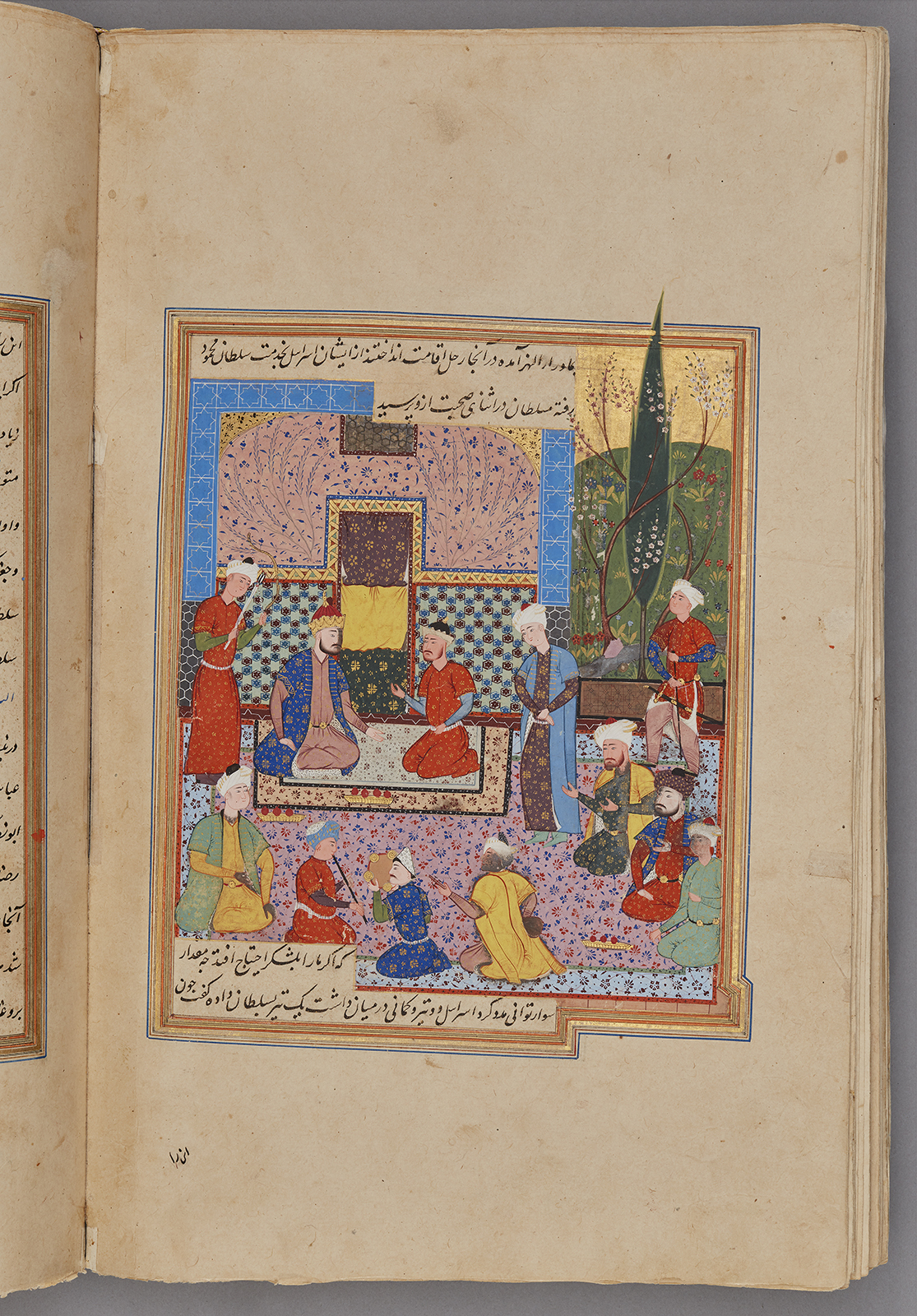Click on the image to zoom
At the court of Mahmud of Gazni, Folio from a manuscript of Nigaristan
- Accession Number:AKM272.f130v
- Creator:Author: Ahmad b. Muhammad Ghaffari, Persian, died 1567 Scribe: Ahmad al-Shirazi
- Place:Iran, Shiraz (probably)
- Dimensions:38.7 cm × 25 cm × 6.4 cm
- Date:1573-74 CE/980 AH/AH 980
- Materials and Technique:Ink, opaque watercolour, and gold on paper
The miniature painting "At the court of Mahmud of Gazni" is from an intact manuscript of Kitab-i Nigaristan, a collection of anecdotes and historical incidents written in prose by the historian and scholar Ahmad Muhammad Ghaffari (1504–1567/68) of Kashan in 1551–2. This illustrated manuscript, dated 1573, was probably produced in a Shiraz workshop.See AKM272 for more information about the manuscript and links to the other illustrations.
Further Reading
The view into a pavilion-like interior reveals a banquet scene. A group of figures encircles two crowned figures. The man on the left is Mahmud of Ghazni, who ruled the Turkic dynasty from 999 to 1030. On the right is the ruler of Transoxiana.
The rulers are in conversation: Sultan Mahmud asks his guest, Prince Israʾil from Transoxiana, how many men would support him in a time of war. The Transoxian ruler answers that he would be able to summon to Mahmud’s aid one hundred thousand soldiers. The Sultan no longer feels safe with the power of his opponent's army—whoever sends him so many men for support, could also command troops to march against him—so he decides to imprison Israʾil immediately.
However, Mahmud will be unable to prevent one of Isra’il’s descendants from seizing Khurasan. Thus the Seljuk battle for territory will begin.
The main room is marked by a blue wall which makes it look like a pavilion. The text boxes—which convey the moment when Sultan Mahmud asks Prince Israʾil the fateful question— are set parallel to the length of the blue arch. A landscape detail on the right shows a cypress tree breaking through the pictorial frame. Throughout the Nigaristan, cypresses are often treated in this manner.
Court scenes such as these, where a crowned figure sits enthroned, are among the favourite types of scenes depicted in miniature painting. The throne can be in a flourishing landscape or in an interior, depending on the context of the illustration. An interior court scene is usually supplemented by other figures such as servants and musicians.
- Elika Palenzona-Djalili
References
Sims, Eleanor. Peerless Images: Persian Painting and Its Sources. New Haven and London: Yale University Press, 2002. ISBN: 9780300090383
Note: This online resource is reviewed and updated on an ongoing basis. We are committed to improving this information and will revise and update knowledge about this object as it becomes available.


